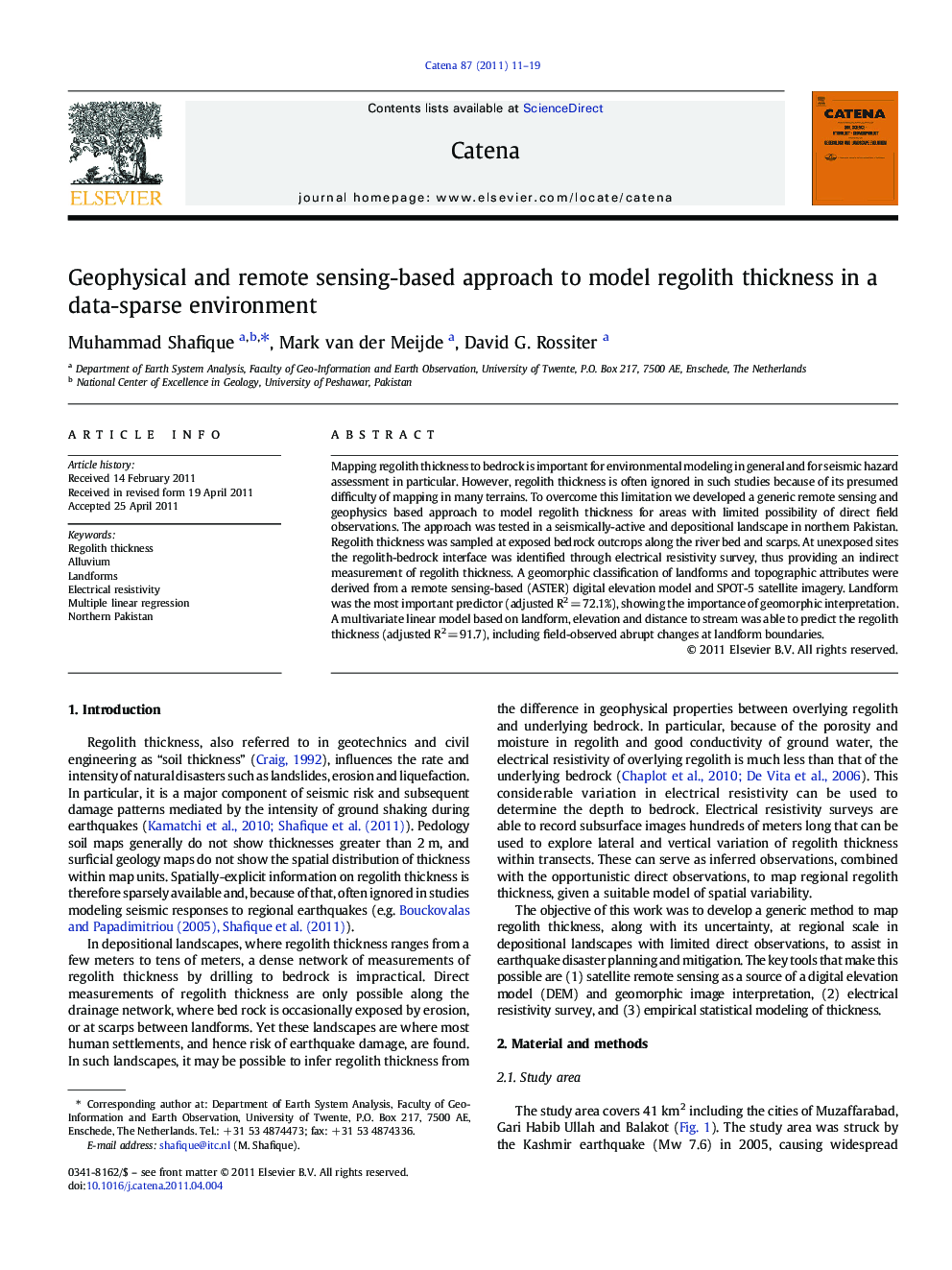| Article ID | Journal | Published Year | Pages | File Type |
|---|---|---|---|---|
| 4571973 | CATENA | 2011 | 9 Pages |
Mapping regolith thickness to bedrock is important for environmental modeling in general and for seismic hazard assessment in particular. However, regolith thickness is often ignored in such studies because of its presumed difficulty of mapping in many terrains. To overcome this limitation we developed a generic remote sensing and geophysics based approach to model regolith thickness for areas with limited possibility of direct field observations. The approach was tested in a seismically-active and depositional landscape in northern Pakistan. Regolith thickness was sampled at exposed bedrock outcrops along the river bed and scarps. At unexposed sites the regolith-bedrock interface was identified through electrical resistivity survey, thus providing an indirect measurement of regolith thickness. A geomorphic classification of landforms and topographic attributes were derived from a remote sensing-based (ASTER) digital elevation model and SPOT-5 satellite imagery. Landform was the most important predictor (adjusted R2 = 72.1%), showing the importance of geomorphic interpretation. A multivariate linear model based on landform, elevation and distance to stream was able to predict the regolith thickness (adjusted R2 = 91.7), including field-observed abrupt changes at landform boundaries.
Research highlights► A generic approach to predict regolith thickness with limited field observation. ► Satellite remote sensing data was used to derive landforms and topographic attributes. ► Electrical resistivity was successfully used to measure regolith depth to greater depth. ► The derived model explains 91.7% of the regolith variation in the area.
